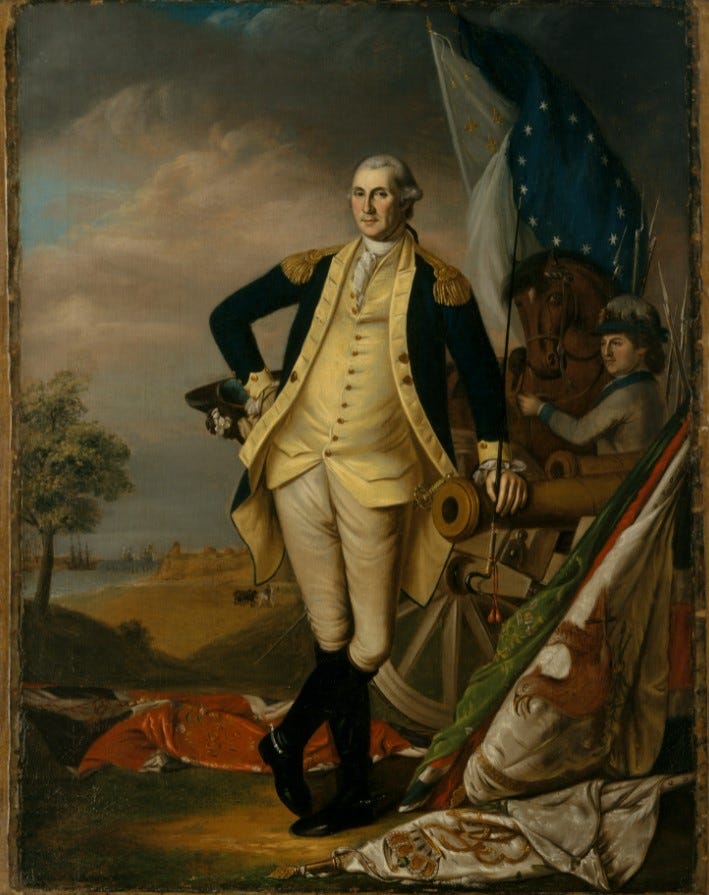TDIH: George Washington’s new spy ring
Think about that for a minute. Two individuals operating against their very own families, spying for the Patriot cause. Those two really must have believed in our war for independence!
On this day in 1777, George Washington issues orders to Nathaniel Sackett, making him director of a new spy ring in the New York area.
Yes, this is the same Nathaniel Sackett that makes appearances on AMC’s TURN episodes.
e real-life Sackett was a New York merchant who joined the Patriot cause early in the war. He was a member of his local Committee of Safety and the Provincial Congress. He helped with military stores for a while. Perhaps most importantly, he became a member of the Committee for Detecting and Defeating Conspiracies.
In that capacity, Sackett helped one of the war’s best-known spies, Enoch Crosby. Remember Crosby? He was the guy who spied for Washington, then repeatedly set himself up to be “captured.” Once he was in American custody, he could report what he’d learned. Then he would “escape” from American forces and begin spying anew. Sackett helped provide for at least one of Crosby’s staged escapes.
He must have been performing well, because Washington asked him to take on a new task in early 1777.
“The advantage of obtaining the earliest and best Intelligence of the designs of the Enemy,” Washington wrote, “The good character given of you by Colo. Duer—and your capacity for an undertaking of this kind, have induced me to entrust the Management of this [spy] business to your care till further orders on this head.” Washington authorized “Fifty Dollars pr Kallender Month” to Sackett for “your own trouble in this business” and issued a $500 warrant “to pay those whom you may find necessary to Imploy.”
Historian Alexander Rose describes Sackett’s role at this juncture as “de facto chief of intelligence,” and he argues that Sackett is the “real founding father of American intelligence-gathering.” But Sackett’s basic job at this point was to establish spies who could infiltrate the British camp in New York. Retired CIA officer Kenneth A. Daigler reports that he did this partially by “sending agents into the city under various commercial disguises such as involvement in the poultry business.” Sackett also successfully placed at least two other spies: One was the father of a British colonel. The other was the (still unidentified) wife of an American turncoat. Both individuals had believable reasons to be behind enemy lines.
Think about that for a minute. Two individuals operating against their very own families, spying for the Patriot cause. Those two really must have believed in our war for independence!
In April 1777, Sackett conveyed one piece of valuable intel to Washington: He reported that “a Large number of flat-Bottomed Boats in the harbour of New york which are Intended for an Expidition against Philadelphia and that the British army is going to Subdue that City.” Another spy would later update this report, letting Washington know exactly when those boats left for Philadelphia.
Washington seemed unhappy that Sackett was slow in sending him information, and he possibly worried that he was getting inaccurate reports. “The good effect of Intelligence,” he wrote Sackett, “may be lost if it is not speedily transmitted—this should be strongly Impressed upon the Persons Imployed as it also should be to avoid false Intelligence and building too much upon Reports alone.”
Sackett’s spy operation ended after a few months, possibly because of these concerns expressed by Washington. Others, such as the Culper Spy Ring, would soon take his place.
Sources can always be found on my website, here.





Thanks Tara..you are the greatest ❤
Thank you, Tara!